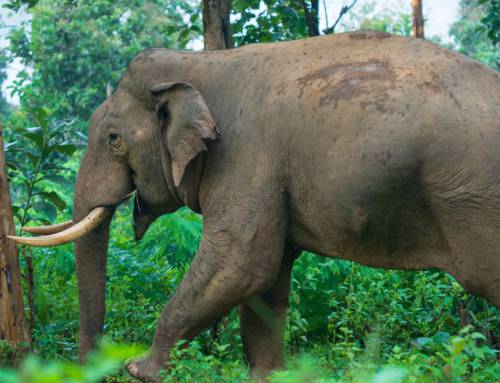Author: Sikha Hariharan
Key Highlights:
- The study examined the impact of hunting and habitat on waterbird communities in agricultural wetlands in the Kanchipuram district of Tamil Nadu.
- Twenty-seven wetlands were surveyed to document the diversity and abundance of wetland avifauna and carried out interviews of hunters to examine hunting intensity and market trends.
- Findings reveal a drastic decline in waterbird diversity by hunting, fueled by increased market demand, rather than subsistence.
- While large-sized birds such as black-headed ibis and Asian openbill were preferred targets, hunting mostly affected the abundance of medium-sized and piscivorous bird species.
As winter approaches, migratory birds will make their annual trip to the water bodies in India; wetlands especially make a haven for avifauna. These wetlands house a range of native and migratory birds. However, human activities are increasingly threatening these unique habitats, mainly due to land conversion and habitat degradation. While wetlands are centers of important biodiversity conservation, the majority fall outside designated protected areas and are thus easy targets for illegal activities, such as hunting.
Scientific evidence and studies on hunting are largely missing due to the difficulty in obtaining reliable information. To fill this knowledge gap, a group of scientists tried to understand the impact and scale of hunting on waterbird communities in agricultural wetlands of southern India. The study was co-authored by a scientist from the Centre for Wildlife Studies, along with others from the Tata Institute of Fundamental Research, Nature Conservation Foundation, and Foundation for Ecological Research, Advocacy and Learning.
The authors conducted the study in the wetland habitats of Kanchipuram district in Tamil Nadu, including in two protected areas, namely Vedanthangal and Karikilli as control sites for comparison. They conducted the study from February to May 2014. They used a combination of ecological and social factors to assess the hunting pressure on waterbird diversity and abundance. The authors documented the waterbird community in 27 wetlands using point counts and recorded seven habitat variables. Further, they interviewed 272 hunters to examine hunting intensity, species hunted, and motivation for engaging in the hunting of waterbirds. This was further supplemented by five market surveys to assess trends.
The study pointed out a drastic decline in waterbird diversity and abundance due to hunting. Out of the 53 birds documented from the 27 wetland habitats, 47 were reported to be targeted for hunting. The hunters highly preferred large-sized birds, such as black-headed ibis and Asian openbill. While hunting was seasonal — mainly during December to April — it coincided with the migratory season when birds come in large flocks. Further, the illegal poaching took place during dusk and dawn — the peak time of bird activity. The findings revealed that piscivorous and medium-sized birds, such as common sandpiper, great cormorant, common teal, and red-crested pochard were the most affected.
Contrary to popular belief, the study suggests that market demand rather than subsistence drives hunting, with money being the primary motivation (73.52%). The monthly income of hunters on average was 66.33% more than the monthly per capita income in the country. Adding to this was the lack of fear of prosecution. About 74.63% of hunters reported that they supply bird meat to over 400 eateries around the study region. Pond heron was the most commonly traded bird.
Hunting has caused large-scale and local extinction of multiple species across diverse taxa. The avifauna, especially the migratory bird species, are being affected heavily by hunting activities, as revealed by the study. Unprotected and already threatened wetland habitat is critical for waterbird conservation. While hunting is prohibited, it continues due to lack of prosecution. Enhanced enforcement is the need for the hour. Greater attention needs to be given to the wetland habitats that are a refuge for not only migratory but native species as well.




